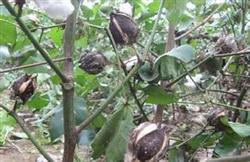Field Management of Peanut planting
Everyone must have eaten peanuts, peanuts can not only be processed into a variety of different flavors of products, but also can be used to extract oil, in China is also a more important oil crop. The market of peanuts is very large now, and a variety of peanut products can be found in all kinds of stores and supermarkets. As a result, growing peanuts is also a very promising project, so how should we carry out field management when growing peanuts? Let's take a look at it with the editor.

1. Cultivate the soil by ploughing.
In the process of planting, we should cultivate the soil properly according to the softness of the soil and the growth rate of the plant. Mid-tillage can make the soil softer, improve soil permeability, strengthen root respiration, make nutrient absorption more comprehensive, and promote the growth of peanut. Proper soil cultivation can effectively keep heat and water, prevent the occurrence of waterlogging, and because peanut fruit grows in the ground, it can also promote the development of pods and ensure yield. The height of the soil should not be too high, otherwise the ripening time of the fruit will be delayed.
2. Apply foliar fertilizer
Foliar fertilizer is very important for peanut. Foliar fertilizer can not only provide water for leaf growth, but also promote leaf growth rate, strengthen photosynthesis and increase nutrient accumulation in the plant. However, we can not blindly apply foliar fertilizer, improper use may make the leaves too hypertrophy, affect the light of the plant, but will have a certain impact on the growth of the plant. The most suitable time to apply foliar fertilizer is in the podding stage of peanut, which is the weakest root ability of peanut, so we should apply some foliar fertilizer to supplement the nutrition of the plant.
3. Water management
Peanut water demand has a certain stage, before the flowering needle period, the water demand is not much, but at this stage, its water demand will gradually increase. We should timely watering, replenish water, ensure the growth of the plant, can not let the plant in a dry environment. However, it should also be noted that there can be no stagnant water in the field, and the stagnant water should be discharged in time, otherwise the stagnant water will affect root respiration and even lead to rotting roots. Therefore, while ensuring that the soil is moist, it is also necessary to prevent the soil from accumulating too much water to form consolidation.
4. Control up and down
The podding period is one of the most important periods in the whole growth process of peanut, and it is also the fastest growing stage of peanut plant. Therefore, the demand for nutrition will gradually increase, if the nutrition needed by the plant is not met at this stage, it will have a great impact on the growth of the plant and the plumpness of the pod. However, we should also pay attention to do not fertilize too much, too much nutrients will lead to overgrowth of plants, not only affect the permeability of the field, but also appear the phenomenon of flowers and unfruitful. Reduce the yield and affect the planting interests of farmers.
The above four points are the matters needing attention when planting peanuts. When planting peanuts, you should pay attention to the amount of water, not to mention excessive water shortage. I have introduced its harm to you above. I hope you can pay attention to these problems. Although there may be some management details, but the details can not be ignored, the so-called details determine success or failure. This article is for reference only. I hope it can help you.
- Prev

Causes and control methods of white spike in wheat
Causes and control methods of white spike in wheat
- Next

How to prevent and control rotten cotton and peach
1. Dredge the ditch before and after the rain, timely clean the cotton field drainage ditch, require the ditch to be smooth, ensure that there is no stagnant water in the cotton field when it rains, the ditch can quickly discharge open water after rain, and effectively reduce the underground water level in the cotton field. two。 Pruning and leafing in the late growth stage of cotton can reduce nutrient consumption.
Related
- The first cup of black tea in spring, the flavor and history of tea gardens in Kenya, Africa
- The computer can not only choose potatoes, but also grow tea rice. AI will grow winter oolong tea champion.
- It is not only the inflated tea bitten by insects, but also engraved with the four seasons tea in Beipu.
- The Oriental Beauty Tea Festival in Zhuxian County takes the stage at the weekend to experience the plus-size feast of oil tea.
- & quot; Oriental Beauty Tea & Exploration of Emei in Hsinchu, the hometown of quot;
- The new variety of strawberry "Tainong 1" dessert is the first choice with mellow aroma. Crimson gorgeous
- History of Tea in Taiwan: from Wild Inner Mountain to Export Tea Garden
- Two types of Taiwan Oriental Beauty Black Tea won the British three-Star Award for Childhood Tea Xiang Zhang Jiaqi changed from pilot to champion tea maker.
- Banana species and varieties: the planting history of Taiwan Xianren banana and dwarf banana is long, is banana disease resistant?
- Coffee planting Technology: Qianjie Coffee from Seedling to harvesting

